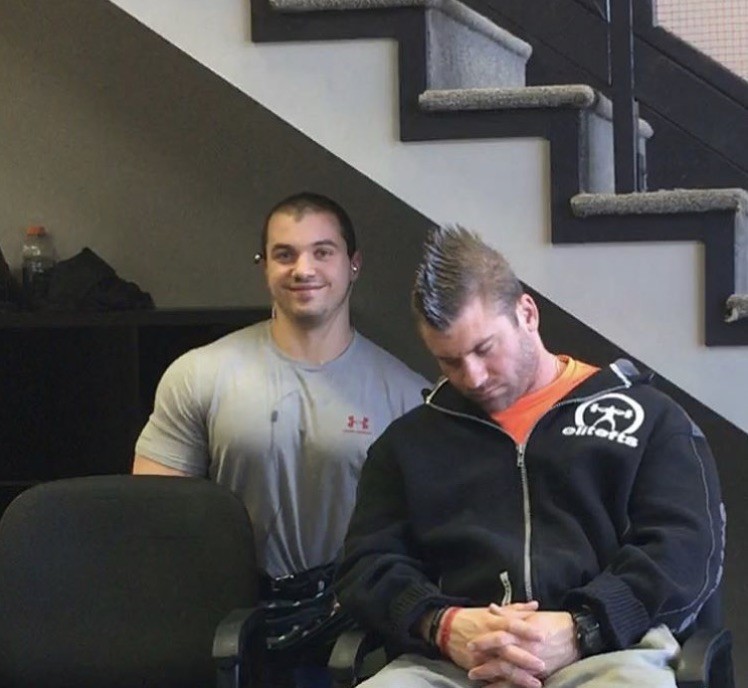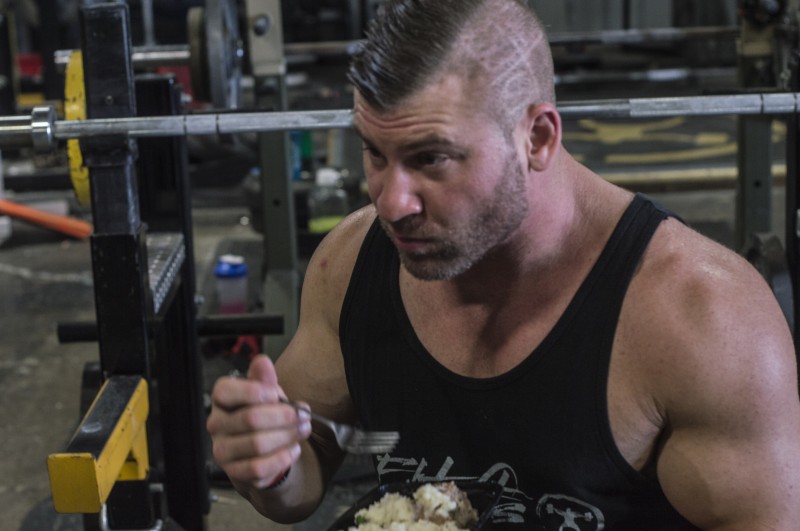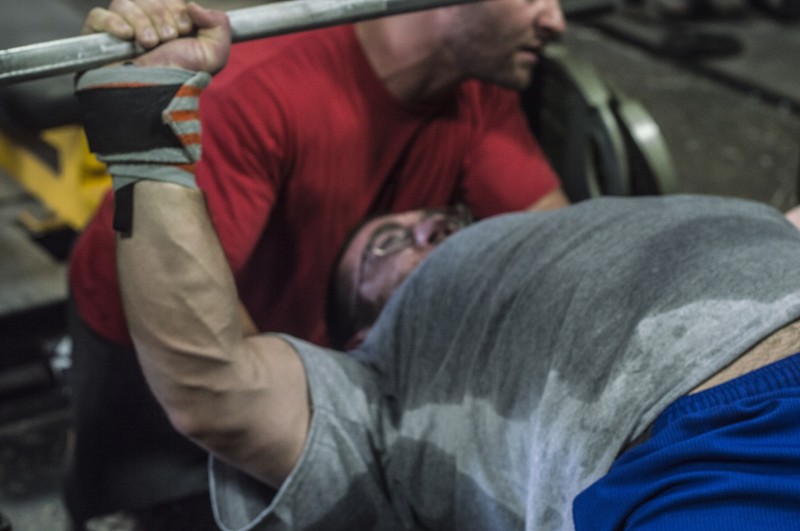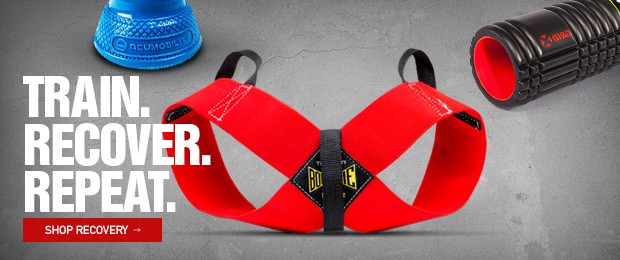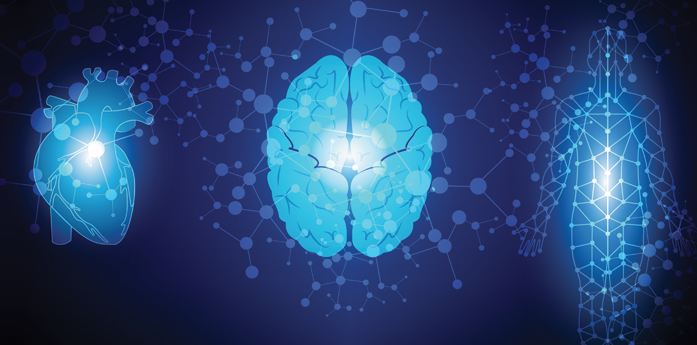
Welcome to the second installment of Back to Recovery Basics. In the first article of this series, we focused on the foundations of recovery. This serves as an answer to the “why” question of recovery and outlines the large role that recovery has in improving performance and maintaining your health and longevity in athletics. If you are just joining the series, I highly recommend you cover this material before moving forward, as it will give direction to your recovery plan.
PART 1: Back to Recovery Basics: Fundamentals of Recovery
Now that we have established why a solid recovery program is essential to your growth, the conversation now switches to how you can build your own recovery program. To continue using the analogy of recovery as a structure, every solid structure starts with a foundation. The foundation for a proper recovery program starts with three essential needs, “the big three.” Now, if you are thinking the big three are recovery are preworkout, protein, and creatine, you are sadly mistaken, and this may be a good opportunity for you to reevaluate your training priorities and influences. Before beginning, keep in mind that although the big three are being presented as an integral role in recovery and improving performance, they are also essential to a healthy lifestyle. Each of the big three can be applied to the general population in order to improve health and quality of life.
Sleep
Out of the big three, sleep stands alone as the single most important aspect of recovery. Unfortunately, it also stands alone as the most neglected as far too many people lack the required sleep to properly recover. We are taught in society that sleep is a commodity when in reality it is a necessity. Sleep is required for modulation of almost every system in the body. For the purpose of performance, sleep aids in growth and repair and helps provide optimal neuromuscular function, cognitive function, immune function, hormonal balance, and emotional well-being. Alternatively, sleep loss is directly associated with a decrease in overall performance. As discussed in the inaugural article, the repair and growth process of recovery occurs outside of training and is essential in increasing performance. As far as repair and growth are concerned, there is no time better than during sleep.
Hormonally, over 95% of the body’s daily hormone production occurs during sleep. In males, growth hormone follows a pattern of secretion that is typically a low pulsating release, with some short secretary bursts at a few specific times. One of these times of increased secretion is during the first phase of slow-wave sleep, which is roughly one to seven minutes in duration. In fact, the only other non-pharmacological stimulus that initiates increased growth hormone secretion at a rate similar to sleep is training.
Because this window follows a circadian rhythm, we can look at sleep’s importance to performance in a few ways. If an individual is obtaining adequate sleep, they are secreting growth hormone at a normal and optimal rate. If sleep deprivation occurs, that individual will be decreasing his or her ability to recover and subsequently their performance. This decreased hormonal release can also be seen in individuals who work swing shifts or are constantly changing their sleep cycle. Even if the quantity of sleep is on point because the body is switching from sleeping during the day and during the night, there is a disruption in the release of growth hormone.
We can also attempt to manipulate sleep to take advantage of the hormonal benefits of sleep. Remember that the first phase of slow wave sleep occurs early and is responsible for an increase in GH secretion that is only matched by training. By utilizing this information we could attempt to prolong and essentially “stack” this secretion by positioning naps prior to training. As you can see below, NBS Fitness trainer and elitefts athlete, Christian Anto seems to have already nailed this method pretty well.
Aside from hormonal balance and basic tissue repair and growth, sleep has profound effects on the performance of the nervous system as well. Every athlete understands that best way to learn a new skill or develop a lesser skill is to practice, but there’s also another way: sleep. According to a study in 2005 by Walker and Strickgold, the nervous system is actually able to continue learning new motor patterns during sleep within the first 24 hours after training. Furthermore, if an individual was deprived of sleep during that first 24-hour period and then tried to make up for the lost sleep, the same improvements in learning were not accomplished. In short, it’s actually practice plus sleep that makes perfect. We also see again that keeping a consistent sleep schedule also has a big impact as well.
Cognitively, sleep deprivation is known to affect the region of the brain involved in decision-making. This supports the generally accepted notion that sleep leads to improvement in cognitive function and vice versa. Sleep is so important for cognitive function that even one night of sleep deprivation can affect work tasks such as quick, reactive decision-making and also cause delayed recall of information. These clearly have a carry-over to performance in athletics.
MORE: How to Optimize Your Biggest Recovery Asset
So what is the optimal amount of sleep? For the normal layperson, research has shown that when left without any mindfulness of time, most people tend to sleep between seven and eight hours out of every 24 hours. For those concerned with performance, however, research has shown that the ideal range increases to nine to 10 hours of sleep. Of those nine to 10 hours, 80% to 90% should come from a single session of sleep, with the remaining one to two hours from napping at some point in the day. Another suggestion of how to find your personal sleep needs is to go to bed at night when tired and wake up in the morning when you feel refreshed without an alarm for a few days.
If you are one of the many people reading this thinking, “There is no way I can consistently get that much sleep,” here are a few things to consider. Today’s society is fundamentally structured to engage your attention and curiosity during every second of the day (and night). The effects from this consent interaction are one of the biggest reasons people have problems sleeping. This is simply because instead of allowing their brain to wind down before bed, people today are watching television, playing Xbox, or scrolling through their newsfeed on social media. This does not properly set the stage for sleep, as the brain is now in a more aroused state. Another tip, which we teach in Reflexive Performance Reset, is to focus on your breathing and take 20 big diaphragmatic breaths (in through the nose, out through the mouth). This not only takes your attention off potentially arousing media, but it also stimulates the vagus nerve, which plays a key role in modulating the para-sympathetic nervous system to pull you out of a stressed sympathetic state and prepare your body to rest.
Nutrition
Nutrition has the most commonly addressed of the big three. Of the three keystones of recovery, nutrition is the elephant in the room, and for a percentage of the readers, you are literally the elephant in every room. For many, diet is the most complicated and difficult of the big three to execute, but it is absolutely essential. Agreeably nutrition is not as easy a subject to tackle as the rest of the big three, but the benefits of nailing down a proper nutrition plan are too important to throw to the wayside. EVERY athlete is capable of noticeable performance improvement by addressing their nutrition if they are not currently doing so. Because of this, we will attack nutrition from a few different angles.
I believe that most people will buy into their need for better nutrition once they understand the value of nutrition in their performance. In short, food is broken down by the body into fuel that supports all bodily activity. This sentence tells you all you need to know about nutrition. First, its purpose is to provide raw materials to the body to support everyday function and growth. For performance, this fuel is necessary to provide the body the energy it needs to exert work, recover, and build better, stronger tissue. Food’s primary purpose is not to be pleasurable. Too many times we make decisions on food simply on pleasure without considering the effects on your body from poor food choices. If your priority is performance or health, the effects of that food on your body should be the number one deciding factor. This doesn’t mean everything you eat should taste like dog food, but it does mean you may have to go for grilled rather than fried chicken or for roasted potatoes instead of french fries.
For the sake of performance, you need to consider the consequences of what you put into your body. If you were to line up two mechanically identical drag cars for a race and fill one with quality, high-octane performance fuel and the other with shitty, low octane fuel that is predominantly corn byproduct, who do you think will win the race? In most diets and nutrition programs, there is even room left for “cheats.” Typically dieting and nutrition needs 90% consistency to see long-term progress. If you are eating four to six meals a day, it means you have 28 to 42 opportunities to positively impact your performance each week. And if you can do that at a 90% or better success rate, you can still enjoy some of the foods you like the most as a treat or reward. Just like in any other application, if you put the work in and stay disciplined on the front end, you get to reap the benefits of your hard work and enjoy yourself on the back end.
Now that we have outlined the importance of selecting high-quality foods over low-quality foods, we need to address your nutritional habits and the kind of decisions you are making with food. As far as caloric intake is concerned, there are three sources of food the body uses for fuel: carbohydrates, proteins, and fats. A good nutrition plan will include a balanced amount of all three of these sources. For younger athletes or beginner lifters, it may not be a good idea to go from putting zero effort into your nutrition to counting macros and measuring out your food on a scale. This would be putting the cart before the horse. In reality, applying simple changes and rules to your current nutrition may make a huge impact.
One of the best ways to improve your nutrition is to start at the source — the source, of course, being the foods you are currently choosing. One of the simplest pieces of advice in nutrition is when grocery shopping, only buy foods located in the perimeter of the store. The vast majority of the foods you want to avoid are located in the center aisles, whereas the foods you will most benefit from are on the perimeter of the store. Another recommendation for selecting food is if the food didn't come directly from an animal, tree, or plant, don’t eat it. Also, try to eat food in its purest form (i.e. an orange instead of orange juice). This keeps unnecessary food processing and additives out of the equation.
Quality foods are typically foods that contain higher amounts of their specific macronutrient and are lower in the others. For example, a good protein could be lean hamburger (above 93% lean). It comes from a cow, contains 18 to 24 grams of protein per serving, only a small amount of fat, and zero grams of sugar. Making this choice over a cheaper 80% lean hamburger is an easy but important choice because 80% lean hamburger could have three times the fat. This is important because our goal when eating meat is to get quality protein, not protein with excessive amounts of fat.
Moving forward, an example of a bad carbohydrate could be a donut. It does not come from a tree, does not grow in the ground, and is not a harvested portion from a once-breathing animal. It is made of almost entirely processed materials and also contains high amounts of both fat and carbohydrates. A good example of a carbohydrate could be rice or a potato. Going back to our rules, these foods are in their truest form, are not processed, and really only contain calories from their main macronutrient (carbohydrates). When it comes to added calories we are usually worried about foods having added fats or carbohydrates in them. This often happens when foods are highly processed and manufactured, so if you stick to the rules we just covered (shopping the outside aisles, natural foods, lean protein sources) you’ll be able to avoid a lot of these lesser foods by default. For more examples of great carbs, fats, and proteins choices, there are more complete lists in almost every book or ebook on nutrition. Regardless of approach, good and bad foods typically remain the same.
Fruits and vegetables are great sources of nutrition and should be involved in your diet, as they are a great source of vitamins and minerals. Simply put, there really are only are a few considerations for them. If you understand that fruit is a carbohydrate source, you’ve pretty much got it down for fruit. As far as vegetables go, you can eat as many as you want, but it’s a common misconception to think that corn and potatoes are the same as lettuce (or that french fries are pretty much potatoes so those are vegetables too). Those particular examples should be considered carbohydrates for all intents and purposes. If you remain true to our above rules and buy fruits and vegetables in their purest form, you’re typically good to go.
Once you have started making some changes it is important to try to monitor your progress to some degree. A simple tip is to weigh yourself once a week at the same time with the same scale in the morning (often this is right when you wake up). This is to be able to keep a consistent measure of change from a certain amount of time. Track your weight and pay attention to how you feel and how you’ve performed that week. This will give you an idea if you are on the right track or not. If you are small and are trying to build size and have made the correct choices with food, but don't see your weight going up, you simply need to just eat more of those good foods. By making the right choices on the front end and eliminating all the variables that poor nutrition habit bring up, it is much easier to figure out why you are or aren't getting the results you want.
As noted before, the information here will allow you to get a starting point to improving your nutrition. Although it will get you somewhere in the ballpark of your dietary needs and will put you on the right track towards making better choices in what food you eat, it will not be a completely individualized program right off the bat. I highly recommend that anyone who is serious about their performance or health apply these principles above and start to purchase and read a few publications on proper nutrition. There are many nutrition plans and resources with varying philosophies on how to attack nutritional needs. Many of these resources can be purchased on elitefts or from the individual professionals who developed these methods. Numerous nutrition experts have also provided plenty of free content on elitefts as well. Nutrition is simple at its basic levels, and a basic understanding is key in being able to move on to more advanced nutrition.
For younger athletes, a nutritional coach may not be as vital as just taking the right steps in building good nutritional habits and eating enough to grow, but if a young athlete does have these concepts down and has the resources, a nutritional professional is a great asset to have. The reality is that almost every professional athlete has their own nutrition professional. It is that important, and to perform at the very highest levels, the benefits of hiring someone to program your nutrition is well worth the costs. For more information about how your health and performance can benefit from professionals in the health care and fitness industry, stay tuned for the final piece of the Back to Recovery Basics Series.
Hydration
Proper hydration is the final support in the foundation for a proper recovery plan. Aside from oxygen, water is the most important molecule in the human body. We are all familiar with the fact that a vast majority of our body is made up of water and we all understand that this must mean that water is important for life and optimal function. Having said that, similar to the rest of the big three, hydration is often overlooked and undervalued by athletes and laypeople.
Water plays an integral role in many physiological processes. It is involved in almost every system in the human body, including the cardiovascular, digestive, musculoskeletal, and nervous systems. When proper hydration is achieved, the body is able to properly regulate temperature, maintain healthy joints and soft tissues, increase cellular function and repair, maintain proper cardiovascular health, and properly dispose of metabolic waste from cellular turnover.
MORE: Advanced Theory of Hydration and Glycogen Replenishment
For the sake of the meathead and athlete’s understanding, we will stick to the importance of water as it relates to the musculoskeletal system, but keep in mind that water is necessary for all of the processes listed above, as well as numerous others. In the musculoskeletal system, water is necessary for more than keeping us from cramping or cooling us down. The soft tissues in our body, specifically muscle, ligaments, and tendons, rely heavily on proper hydration in order to achieve proper function. In ligaments and tendons, type I collagen fibers make up 70% to 80% of the dry weight of the structure. Type I collagen is a very dense and inelastic structure, which means that its main job is to resist stress and strain. But even type I collagen fibers need the help of water to do its job at an optimal level.
As you would imagine, dry weight implies that that water plays an important role in the makeup of a tendon and ligament. In fact, water is the largest portion of a tendon or ligament’s weight. Through the attraction of proteins like glycosaminoglycans (GAG) and proteoglycans, large amounts of water are contained in tendons and ligaments. The addition of water is a valuable component of stability as it provides resistance to mechanical loads, most specifically compressive loads. This makes ligaments and tendons more resistant to stress and deformation when proper hydration is achieved, as it helps resist injury and keeps joints stable. For this reason, sports that involve weight cuts from water loss or long amounts of exposure to hot environments can present a situation, which leaves the athlete vulnerable to injury. This is why it is important to rehydrate from practice to practice or after a water cut. It also presents an argument to consider a more gradual weight drop in strenuous sports such as wrestling, strength sports, and MMA.
Another benefit of a well-hydrated athlete includes better joint health. Similar to tendons and ligaments, joints also have GAGs such as hyaluronate (AKA hyaluronic acid), which also attract water. This allows the joint to become lubricated during movement and resistant to compressive loads. Chronic losses in water can thusly lead to an environment in which joint forces are less easily absorbed Furthermore, joint health is largely reliant on the exchange of various cells, gases, nutrients, and waste that occurs between extra- and intra-articular fluids during normal movement. All these processes are dependent on proper water intake.
So how much water should you be drinking? There are numerous sources for hydration requirements, but a good starting point is to drink half your body weight in ounces as a minimal requirement. From there you can drink more water based on the demands of your training and environment from day to day. A normal training day in the weight room may require less additional water than a two and a half hour practice during the middle of fall camp. The use of other hydration tracking methods such as urine color charts is also acceptable to keep your hydration on track.
The information covered on the big three should serve as a great template for athletes from any sport to use to begin building a proper recovery plan. The big three in recovery allow the athlete to experience better performance, resistance to injury, and longevity in their sport. The key point to be made about the big three is that they are all choices that the athlete must make and prioritize for themselves. With today's societal trends in health and performance, we are often trained to think that someone else is responsible for our decisions and health. In reality, that's just simply not the case. The person with the biggest role in your success as an athlete is yourself. Although there are plenty of professionals and resources available to help you along the way, if you do not make the conscious decision to prioritize how you treat your body, you will never realize your true performance potential.
Stay tuned for the final installment of Back to Recovery Basics, which will cover how to build your recovery plan around the foundations set by the big three.
References
- Chavaunne et al. The role of the non-collagenous matrix in tendon function. Int. J. Exp. Path. (2013), 94, 248–259.
- Judelson D. et al. Hydration and Muscular Performance: Does Fluid Balance Effect Strength, Power and High-Intensity Endurance? Sports Med 2007; 37 (10): 907-921.
- Lavagnino, M. Tendon Mechanobiology: Current Knowledge and Future Research Opportunities. J Orthop Res. 2015 June; 33(6): 813–822.
- Privalov P, Crane-Robinson C. Role of Water in the Formation of Macromolecular Structures. Eur Biophys J. 2017; 46(3): 203–224.
- Vetner, R. Role of Sleep in Performance and Recovery of Athletes: A Review Article. SAJR SPER, 34(1), 2012.
- Walker, MP. et al. It's Practice, with Sleep, that Makes Perfect: Implications of Sleep-Dependent Learning and Plasticity for Skill Performance. Clinics in Sports Medicine, Volume 24, Issue 2, 301-317.
Dr. Tyrel Detweiler provides care for athletes across all sports with a majority of his experience coming from working with athletes in collegiate and strength sports. He holds a doctorate in Chiropractic and a Master’s of Science in Sports Rehabilitation. He is the owner of Mid-South Spine and Sports Performance in Cordova, TN. This facility has a unique relationship with NBS Fitness, giving him access to some of the best strength athletes in the Mid-South. He was a former member of Mizzou’s Sports Medicine Team and is currently in his second year as the chiropractic physician for the University of Memphis Athletics. Tyrel was a college football player at the University of Iowa and has competed in powerlifting and strongman since 2010. He is also the current Mississippi state representative for United States Strongman. He can be reached at drdetweiler@midsouthssp.net.










